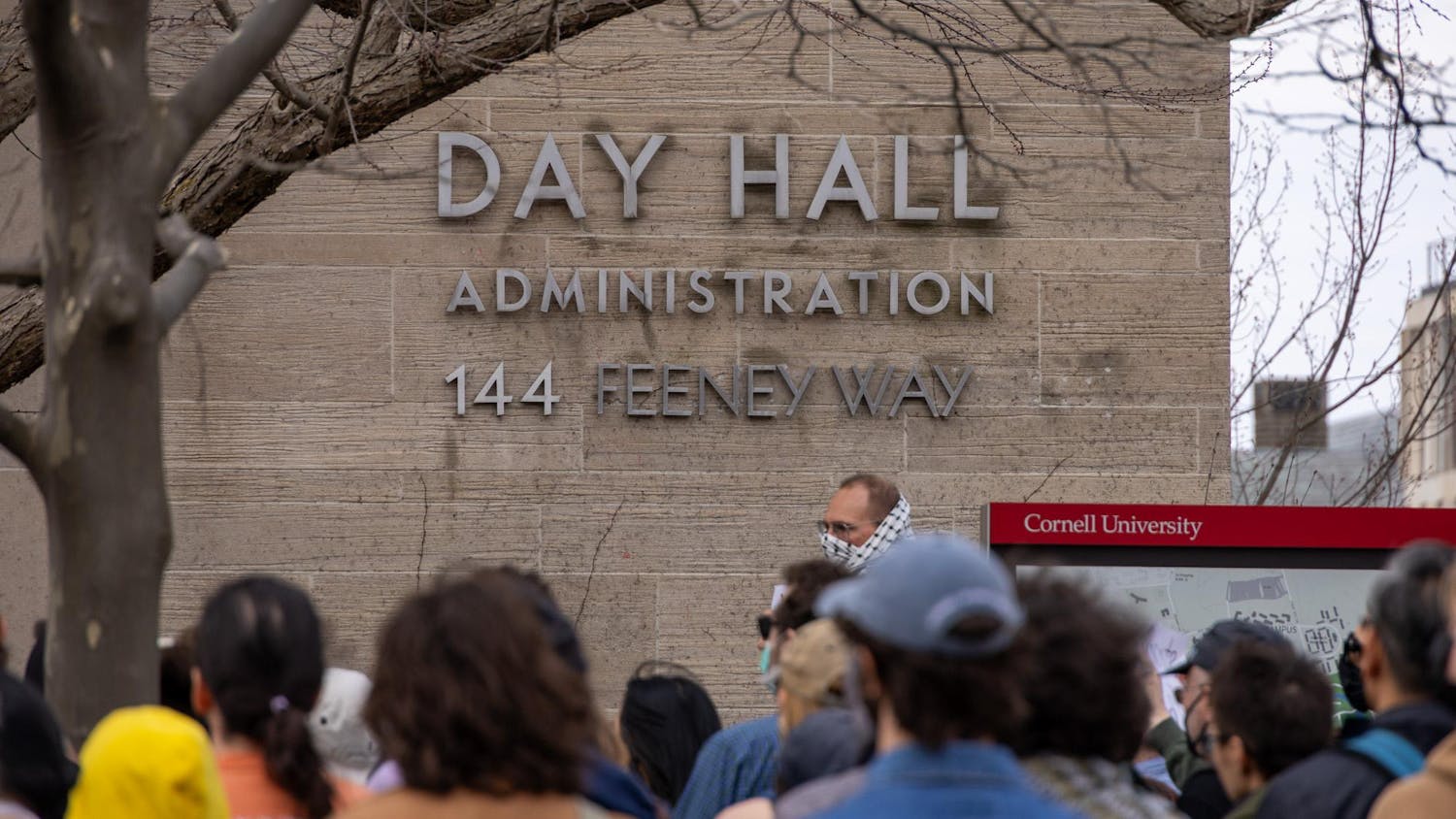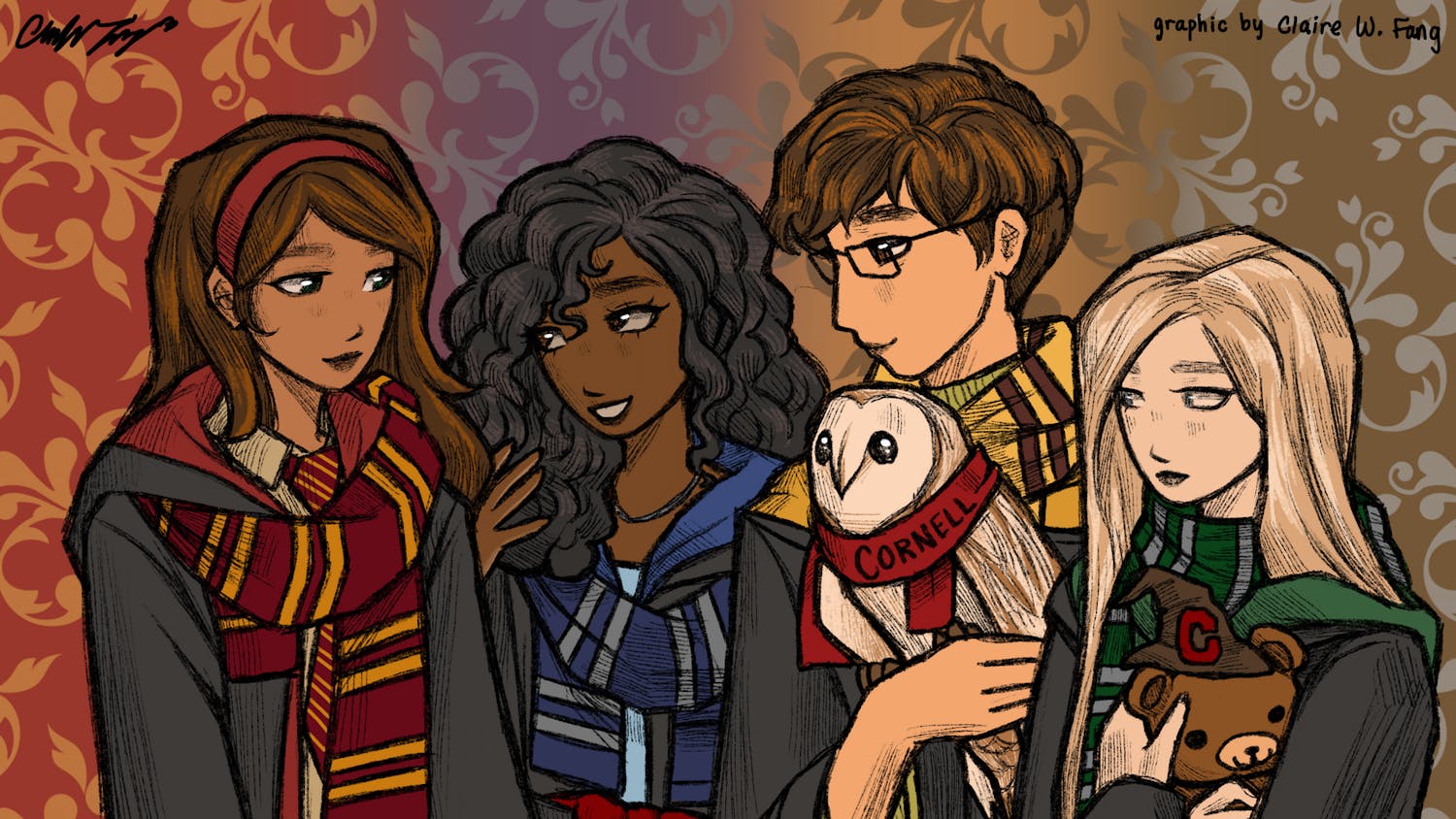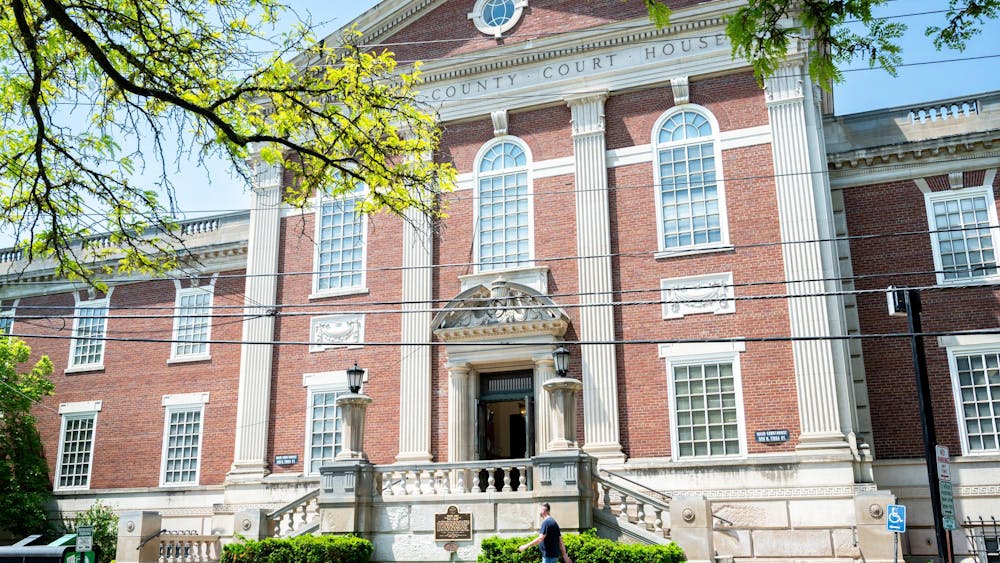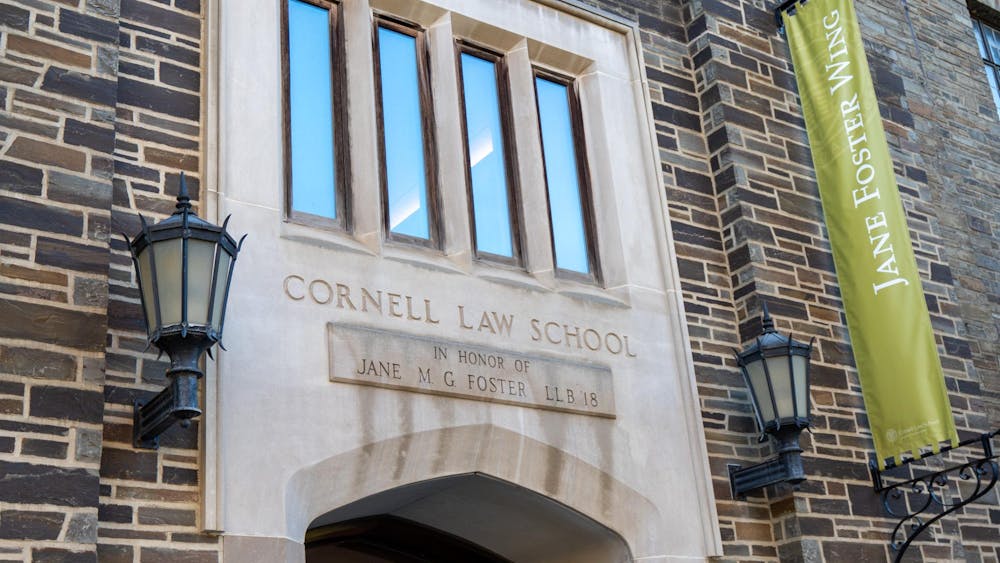For the past 18 months, Olin Library has been under construction for renovations to its basement and the first floor. While the project was completed this summer, a group of Cornell engineering students came together to give Olin’s iconic and forgotten tech — a nearly 1,000 pound call board from its original opening in 1961 — a new life as a digital clock for the library.
The reimagined relic now hangs near Amit Bhatia Libe Café at the heart of the library, serving as both a functional timepiece and a tribute to Olin’s past. The Sun spoke with members of the project team to understand the process behind the redesign and the importance of the relic.
Olin’s Call Board: Books In, Undergrads Out of the Library
Since it was initially opened in 1961 and well into the 1990s, Olin was a graduate student and faculty only library. However, many undergraduate students and other patrons utilized the library’s resources — namely its books, daily. To request an item, patrons filled out a slip at the circulation desk and received a number. The request was processed and when ready, the call board would then light up the patron’s number.
Prof. Joe Skovira Ph.D. ’90, electrical and computer engineering, who is the faculty leader of the project team, described the process as similar to going to the deli and ordering a sandwich.
When the library opened to undergrads in the 1990s, the use of the call board was phased out. Now, a group of Cornell engineering students, under the guidance of Skovira, have redesigned the call board and given it new life.
“Working with these students was an exceptional experience,” Skovira said. “Their creativity and perseverance really shines on this clock and I am very proud of all of them.”

The engineering students who worked on the project alongside Prof. Joe Skovira Ph.D. ’90 (Zeinab Faraj / Sun Assistant Sports Editor).
Akansha Shrestha M.Eng. ’25, an engineering student who worked on the project, explained that many library staff, students and alumni had expressed interest in making the call board “functional” and more visibly “displayed” at the library.
“When the project first started roughly four years ago, it was undergrads that brought it up and worked on it,” Shrestha said. “So we all came together and came up with the idea of using it as a timing indicator to display the hour, minute and second.”
Rebuilding Without Replacing
Shrestha, along with Anushka Mathew M.Eng. ’25, Harsh Panara M.Eng. ’25 and Yikai Guan M.Eng. ’25 worked together on reinventing the old call board.
According to the group, they started working on the project this past year and their roles include adding new pixels to the display, designing circuits and a website for library staff to pick the colors and other display features of the digital clock. While trying to do all this, the group preserved as much of the original 1960s wiring as possible.
“While they were working on the sign I gave them the requirement that they could not make any mechanical changes to the sign which essentially means they have to work around and preserve as much of the sign as possible," Skovira said.
The students had to collaborate together and with faculty members to work around preserving the old relic’s parts. In addition, the call board weighs 1,000 pounds which made transporting it a difficult task.

“The whole project was a big team effort of everyone working together and getting feedback from multiple people through the journey,” Mathew said. “When we started it we definitely did not think this was the plan but watching everyone add their own features was a special success.”
Panara, who spearheaded the website development, said he worked with library staff to make the website “simple and user friendly.” At the same time, Panara worked on ensuring the website connected well with the computers and data processors located on the call board. He utilized a Raspberry Pi Integrator Programme, which is designed to process information to and from the call board onto a web interface for the libraries to control remotely.
One of the most vibrant changes the team made to the call board was adding colors to the display. Originally, the numbers only flashed in a white color. Now, the digital clock has a variety of colors and patterns to choose from. To do this, the team replaced the original 110 volt bulbs with red, green and blue capable neopixels — which are capable of displaying many different colors.

In addition, the digital clock contained “over a hundred custom printed circuit boards in the design,” according to Mathew.
The students also reduced the wiring of the digital clock “from 120 volts to five volts,” according to Shrestha, which is important because it makes the system more energetically efficient and decreases the risks of electrical shock. In addition, each number, one through 100, had to be individually addressed in each of the project’s phases — whether that be cleaning, debugging or creating custom parts.
After a year of working on the project, the new digital clock is displayed near the entrance of the library and Amit Bhatia Libe Cafe — where many students, alumni and visitors have stopped, admired and even questioned Skovira and the group about the project.
“It is very rewarding to see the project be such a success and to watch people at the library when they pass by the clock there is a certain amount of joy and sentimental value attached to the clock,” Shrestha said. “It is amazing to see many students from the past and now interested in the clock together.”
Zeinab Faraj is a member of the class of 2028 in the College of Arts and Sciences. She is the features editor on the 143rd Editorial Board and was the assistant sports editor of the 143rd Editorial Board. You can reach her at zfaraj@cornellsun.com.











